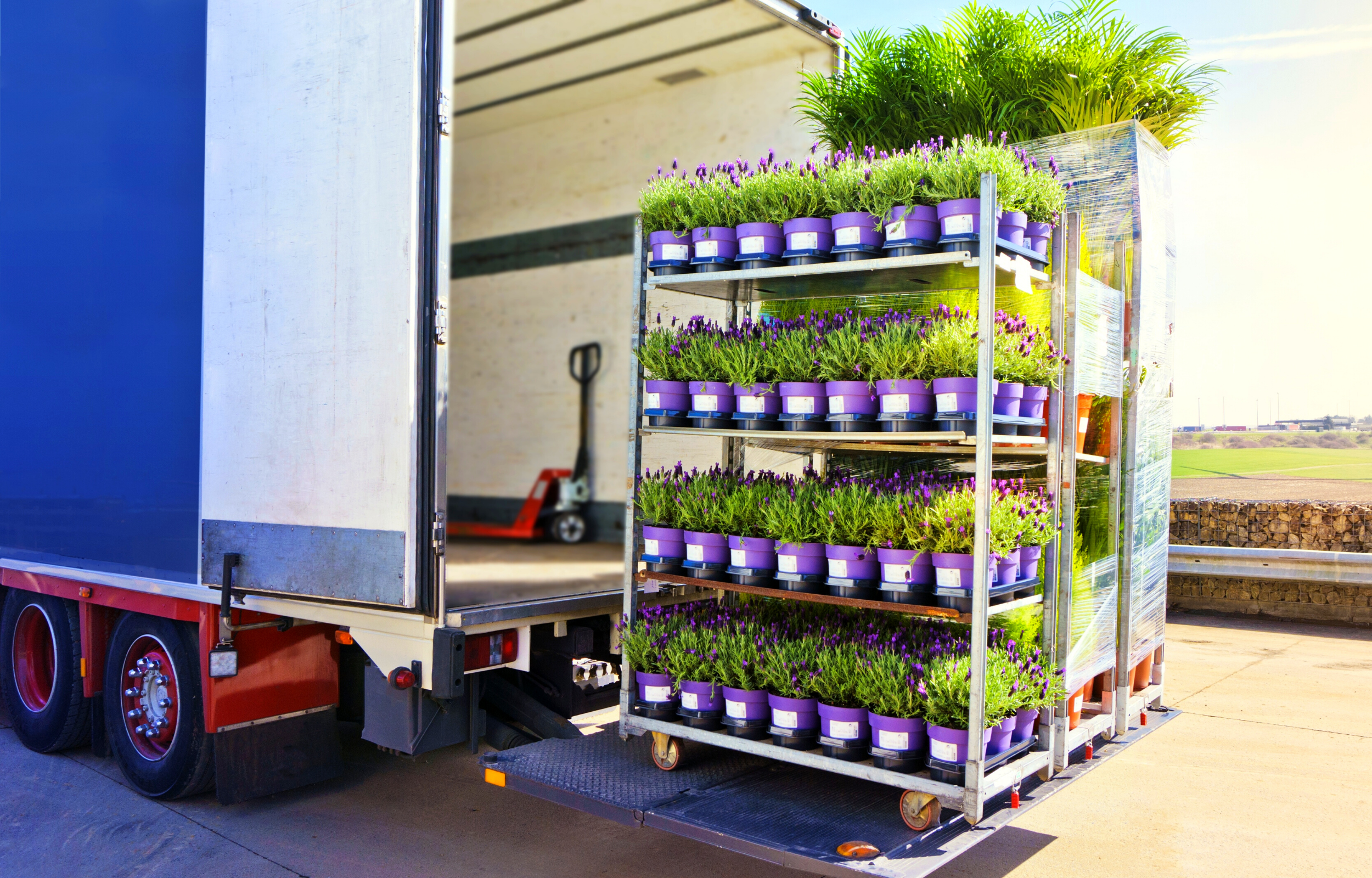Landscape Materials Delivery or Pickup: What’s More Cost Efficient?

Transport Costs: two words that have landscapers everywhere divided. While some enjoy the convenience of having materials delivered, others avoid extra fees at all costs. Both sides are valid, but which option saves you more money? Follow along as we dissect the pros and cons of landscape materials pickup versus landscape materials delivery.
Handling Your Transport
When low-cost transportation services aren’t offered by a vendor, picking up materials can save you money upfront. However, have you considered all the costs involved with this method:
- gas and mileage
- labor cost
- vehicle cost
- organizing logistics
Okay, but what does all that amount to?
Our landscaper friend Jane has a job that requires orders from three different vendors. Each vendor wants to charge her $165 for delivery, which adds $495 to the total order. Wanting to save money, Jane sends her employee Rob to pick up the landscape materials instead.
Taking a closer look at each of the aforementioned costs, let’s see if Jane made the right choice:
1. Gas and Mileage
Rob spent 5 hours trucking between three vendors and the job site. Depending on the truck size, gas can range from $70-$150 for a full day. Rob spent approximately $55 on gas. He also added 325 miles onto the truck’s odometer.
Cost: $55
2. Labor Cost
Labor costs $15-$25 per hour, and it typically takes 45 minutes to pick up and sign out orders. While Rob spent 5 hours driving, he spent an additional 3 hours on location handling the logistics. Jane paid Rob $160 ($20 x 8 hours) to pick up materials. On top of that, since Rob wasn’t executing a profit-generating task, Jane lost out on a potential profit gain. If he’d been working productively on the job site, he could’ve generated $600 in profit for a day’s work.
Cost: $160 (plus $600 of potential profit generation)
3. Vehicle Cost
Truck maintenance typically costs $300-$600 per month. If Jane spends $400 a month on maintenance, then the daily cost comes to $13.
Since trucks depreciate quickly, we can also estimate the $20,000 truck to be worth $5,000 in five years. This works out to a depreciation cost of approximately $10 a day.
Cost: $23
4. Organizing Logistics
Jane spent 1 hour coordinating the pickup logistics with the vendors. Considering her hourly rate, performing this logistics service costs $30.
Cost: $30
5. Total Transport Cost
In the end, trucking between three vendors cost Jane a total of $268. While seemingly less than the $495 delivery fee, it’s not when you factor in the $600 opportunity cost of Rob being on the job site. To increase job profit, Jane should have let her vendors take care of the transport logistics for this complex order.
However, it might have been worth picking up the order if it were simple and near the job site.
Always consider the opportunity cost of both options before making a final decision.
Transport Options Offered by Vendors
How can you tell if the transport cost is fair versus expensive? Let’s take a look at the different ways in which vendors price their transportation service:
Option 1: Bake in Transport Costs
To make transport costs appear lower, or even free, some vendors opt to add the cost of transport into the price of the product. Generally, their prices will be 10% higher to reflect the average transport cost for small orders.
While cheap delivery is enticing, just remember that products will increase in price as your order gets bigger. This marketing hack, known as artificial savings, is designed to make you feel like you’re getting a great deal. So, whenever the transport cost seems too good to be true, compare the product prices to another quote to ensure they’re fair.
Option 2: Split out Transport Costs
On the other hand, some vendors sell products at wholesale cost and charge a higher transportation service fee to the client. As a result, the product prices always remain the same — no matter the size of the order.
In these types of quotes, the transport cost typically takes the following into account:
- number of pickups,
- truck size, and
- standard dollars per km/hr charge
In conclusion, there are many things to consider when analyzing the cost of having your materials delivered versus picking them up. The important thing is to understand all the costs (and opportunity costs) involved so that you can make an educated decision.
***
Interested in reading more about transportation for landscape professionals?
Read more about how landscape businesses can minimize costs by combining loads.
Find out more about how the truck driver shortage will impact landscaping costs in 2022.

